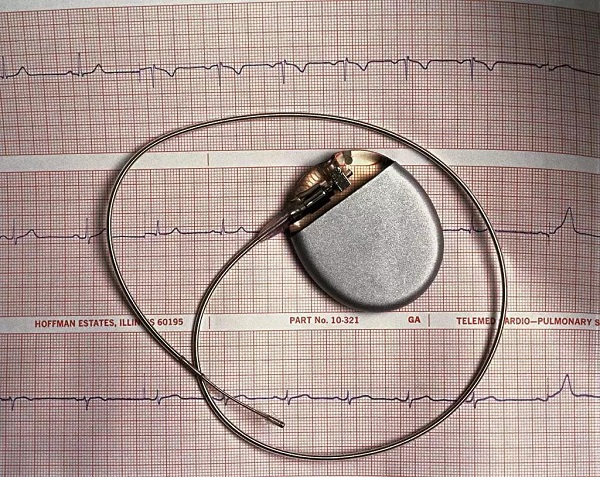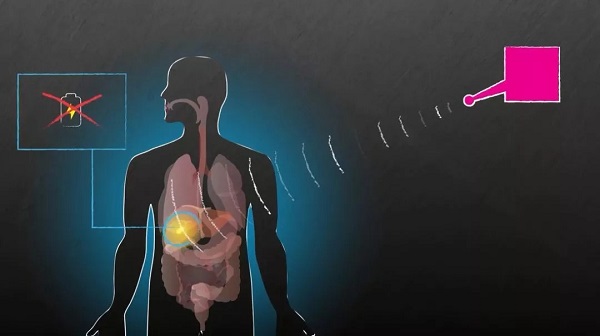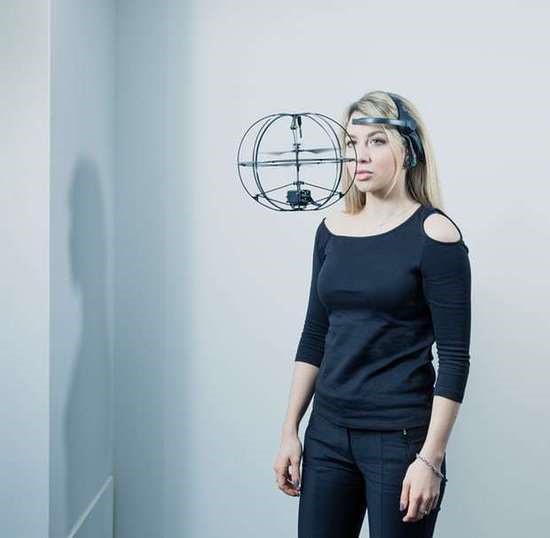Will In-Vivo Networking and Neuralink make us become a Cyborg?
by Ready For AI · September 10, 2018
Perhaps you are imagining that one day become a cyborg, with more and more technological breakthroughs, this desire may soon be realized.

What devices can the human body implant?
An implantable device refers to a device that is placed in a human body by a surgical method or the like to replace and adjust the function of the human body. At present, there are many types of human implantable devices, such as various filling materials, organ assist devices, implantable artificial organs, and interventional devices such as various catheter guide wires and sheaths. Among these implantable devices, artificial organs and auxiliary devices contain the largest number of electronic components.

With the development of technology, especially after the successful implantation of chips in the human body, the human implants in the medical industry began to become more high-end. For example, a bionic pancreas tested by Boston University, which carries a miniature sensor that can be directly connected to a smartphone, it used to reflects the patient’s blood sugar level. A hacker implanted a Bluetooth chip on his arm to detect vital signs: Through the connection with the mobile phone, it can transmit various physiological data in the human body, such as blood pressure, body temperature, pulse and the like.
Italy has even developed techniques for using brainwave pulses to achieve control of the prosthesis. In addition, more and more electronic implant devices, such as cardiac defibrillators, insulin pumps, etc., have also been widely used.
Problems with implanted devices
Although these implantable devices have played a very positive role in improving the quality of human life, there are also some problems that cannot be ignored.

- Battery problem with the device.
Wireless charging technology is just beginning to emerge, so for these implantable devices, wireless charging through the skin or muscles of the human body is obviously a big problem. In this fact, most functional implanted devices still need to reserve space for the battery, which is bound to increase the size of the device.
Then this will create two problems:
- On the one hand, the battery will eventually run out. At that time, it is necessary to take out the equipment and re-install it through the second income, which will undoubtedly increase the suffering of the patient.
- On the other hand, in order to protect themselves, the human body often produces rejection reactions. The larger the volume of the implant, the more it may cause rejection problems, such as muscle swelling and necrosis.
- Data control issues with the device.
With the development of technology, more and more implanted medical devices are loaded with many electronic components for remote data exchange and control, so that the device’s operation status and human body related data can be obtained instantly or periodically. If a person has only one pacemaker or an insulin pump, it doesn’t matter, but what if multiple devices are implanted in the patient?
Is this much like the current independent smart home product? Future human implant devices not only meet life-saving and life-sustaining needs, but can also be implanted to detect different types of chips for real-time detection of body metrics such as body temperature, blood sugar and blood components. It is even possible to implant a device to suit your hobby or special needs, such as implanting a camera in the back of the head and implanting an antenna on the head.
Unified management solution for multiple devices - In-Vivo Networking
In-Vivo Networking (IVN), developed by researchers at the Massachusetts Institute of Technology, Harvard Medical School, and Brigham and Women’s Hospital, will provide an excellent solution for powering and communicating devices in the body.
The IVN consists of two parts, one is an extracorporeal radio wave transmitting base station and the other is an in vivo implant device. In terms of charging, due to the blockage of human muscles, ordinary wireless charging methods are usually already dispersed when they are not reached. The IVN uses an antenna array to transmit radio waves of different frequencies to power the implanted device. At some point, when the transmitted radio frequency reaches the highest point at the same time, it can wirelessly charge the implanted device by breaking the energy threshold required to power the device.

This specially developed implant device’ size is currently like one rice. Then, according to the researchers’ assumptions, all the implanted devices in the future can remove the battery then use the wireless power supply to charge it. Of course, to achieve this operation, the wireless charging device should be smaller.
The role of IVN is not just wireless charging, it also has other features. The device can be installed in a smart pill to control the release of drugs to treat diseases such as malaria and Alzheimer’s disease. It can be used alone or attached to other implantable devices to perform data monitoring of various body organs, such as intestinal bacteria, blood sugar, etc., and send these data to an in vitro receiving device for analysis. At the same time, it can also be combined with brain stimulators to treat Parkinson’s, epilepsy and so on.

If the artificial intelligence module is added to the system, the system can immediately obtain a preliminary evaluation result after obtaining the device data of various parts of the body, which will greatly reduce the workload of the doctor and contribute to the personal health of the patient. From this perspective, IVN actually connects almost all of the in vivo devices to form a network of implants in the body.
Of course, this technology may take several years to finally mature wirelessly, and it will take longer to form a wide range of connections to human implanted devices. But at least it makes us see this possibility.
Musk's Neuralink plan
Regarding the positioning of Neuralink, the official website has a very clear explanation:
“Neuralink is developing ultra high bandwidth brain-machine interfaces to connect humans and computers.
We are looking for exceptional engineers and scientists.
No neuroscience experience is required: talent and drive matter far more. We expect most of our team to come from other areas and industries.
We are primarily looking for evidence of exceptional ability and a track record of building things that work.”
WaitButWhy in a 30,000-word article popularizes the foundations of human survival and development—how human language emerges and how human brains work. The article also points out that communication through sound is slow and inaccurate. And Mask is convinced that We can communicate through the human brain and the computer, he believes that brain-computer connections are beneficial to the telepathy between humans and artificial intelligence.
Link address: https://waitbutwhy.com/2017/04/neuralink.html

At a meeting, Musk did explain some of the techniques related to Neuralink, the so-called “neural web” would become “the digital cortex above the cerebral cortex.” If you want to have a “neural mesh”, you don’t even have to do brain surgery, the hardware you need can be injected into the body through the neck and enter the brain with the blood.
Musk’s neural network may be used first to treat certain diseases, but it is still unknown whether this technology can be approved by the regulatory authorities. From his description, this so-called neural web is not an existing brain stimulator, it is more like an experimental brain-computer interface (BCI), which can record brain signals and use relevant information to control the mouse and External equipment such as a robotic arm. These brain-computer interface implants have great potential, and they will even allow paralyzed patients to stand up again in the future, but no related products are currently approved for clinical use.
Questioning Musk’s voice

Antonio Regalado
“Neurosurgery can be used to implant mechanical devices into the human brain. Complete this procedure requires a series of experiments from rats or monkeys, each of which can take years.”
Regalado pointed out in the MIT Tech Review column that there is still a large gap between the recorded natural brain activity and the brain activity expected by Musk. Moreover, Musk did not clearly outline how he would achieve his goal, how to achieve telepathy after the brain implanted mechanical equipment, which is the main reason for the MIT Tech Review.
Regalado cites an example in which NeuroPace developed a brain implant that controlled seizures in 1997, but the implant was just approved in 16 years after its invention. In addition, brain surgery is also not a general routine procedure but a medical measure taken when the patient’s condition is very severe.

Mary Lou Jepsen
"As I understand it, Musk wants to implant silicon particles (ie, nerve webs) into the body and into the brain through the blood. However, whatever is implanted into the body can have unpredictable consequences."
Mary Lou Jepsen is a Silicon Valley technologist who recently created a startup, Openwater, with the goal of developing a non-invasive brain-computer interface that can be imaged or even telepathically (reading brain thinking patterns). Like Musk, she is not only interested in the medical application of this technology, but also wants to enhance people’s own abilities. However, she believes that all invasive neurological techniques can encounter medical obstacles, even if this technique does not require craniotomy.

Michel Maharbiz
"This is a comprehensive project. The difficulties we have encountered are not only circuit design, but also materials, communication solutions, and energy. The reduction of the volume of the microelectrode system requires years of effort, and technology can only be upgraded step by step."
Michel Maharbiz is a professor of electrical engineering at UC Berkeley. His research project is called “neural dust” and it is a tiny electrode. From the name, this project should be the type that Musk likes. Maharbiz relies on the nervous system to release this tiny wireless electrode, and these electrodes can also record signals.
Right now, their team’s electrode volume is only 2.4 cubic millimeters, but the team’s goal is to further reduce its size. In the first step they are going to reduce it to 1 cubic millimeter and the final target is 0.5 cubic millimeters. Recently, Maharbiz and his colleagues showed the latest results of “neural dust”, which has been able to wirelessly receive energy from the nervous system and send data out.
Human can become a cyborg
Cyborg is an “Electronically Controlled Organism”, it is a creature in which half is human and the other half is machine. We are no stranger to this concept. Cyborg has already appeared in the movie “The Terminator”, and even in today’s real life, there are also some realistic cyborg.
1. James Young's robotic arm

At the age of 22, James lost his arms and legs when he fell from the light rail platform in the Docklands. After the accident, he applied for a prosthesis in 2012 and was selected to test prosthetics by one of the world’s best-selling computer games, Metal Gear Solid. There is a laser on this arm, a USB port on the wrist, and a miniature drone stand.
2. Neil Harbisson's sensing antenna

Harbisson suffers from a rare visual illness, which means he can only see the black and white world. Harbisson was born in the UK but grew up in Catalonia. In 2004 he implanted an antenna in the skull that converts the color spectrum into different vibrations, allowing him to “hear” the color. In addition, he is the only Cyborg recognized by the government in the world.
3. Tiana Sinclair's brainwave helmet

Sinclair is a researcher in computer science, linguistics, and visual culture. She has hosted many events to explore the advancement of trans-species. In the picture, she shows a brainwave technology that focuses on the brain through a head-mounted device to control external objects, such as controlling drones on the ground to take off and land.
4. Rob Spence's electronic eyes

As a documentary filmmaker, Spence lost an eye in an accident in his childhood. In 2009, Spence installed an electronic eye containing a camera and transmitter in the eyelids, enabling him to record and transmit video of the foreground image.
Conclusion
The maturity of implantable devices coupled with In-Vivo Networking and Neuralink will increase the ability of human traditions to fight disease and accidents, meaning that humans will become more powerful. But was humanity at that time still a real human? Or do you already acquiesce into the robotic era that Musk expects? This is a question.


















Develop a Neuralink connection to World of Warcraft. No Oculus Rift needed for full immersion! Imagine all 5 senses in Azeroth! You would need an I/O system for the Thalamus Gate.
What you said is really a good idea. I want to know if this is the case, will the game be difficult to extricate because it becomes too real?